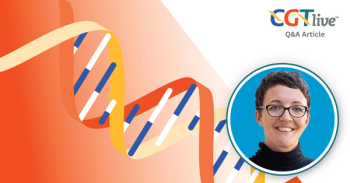
Researchers Offer Indications of and Prophylactic Measures for Hepatotoxicity in SMA
The compiled results revealed that hepatotoxicity related to the gene therapy typically presented as cholestatic, which could be prophylactically treated with prednisolone.
After assessing patients with spinal muscular atrophy (SMA) receiving the gene therapy onasemnogene abeparvovec (Zolgensma), researchers are offering guidance for providers to help identify telltale signs of known liver effects of the therapy, as well as opportunities to mitigate risk.
The compiled results revealed that hepatotoxicity related to the gene therapy typically presented as non-cholestatic; for example, as elevations in serum aminotransferase concentrations. Such elevations are prophylactically treated with prednisolone in clinical trials and is recommended to be used concurrently with onasemnogene abeparvovec as standard of care.
“Prednisolone should be used prophylactically in accordance with prescribing guidelines and greater dosages and/or longer duration considered in the setting of post-dose elevations in serum aminotransferase concentrations,” recommended the researchers based on their findings. “Consultation with a pediatric gastroenterologist/hepatologist should be considered as clinically appropriate.”
Across the 100 patients receiving onasemnogene abeparvovec in 1 of the 5 clinical trials included in the study, the overwhelming majority (90%) experienced some degree of elevated alanine aminotransferase (ALT) and/or aspartate aminotransferase (AST) during treatment, although the researchers noted that 61% of patients did have elevated ALT and/or AST and/or bilirubin concentrations prior to treatment.
According to the researchers, these elevations were transient, with increases occurring on approximately Day 7 and returning close to baseline levels on approximately Day 14. There was a second wave of transient increases observed at Month 1, which resolved by Month 2, and all elevations in serum aminotransferase concentrations were resolved by the end of the study periods.
The majority of elevation were < 3×ULN, while 16% were considered mild (≥ 3xULN to < 5xULN), 9% were considered moderate (≥ 5 to < 20xULN), and 9% were considered severe (≥ 20xULN). No patient experienced elevated ALT and/or AST while also experiencing elevations in bilirubin ≥ 2xULN.
An additional 43 patients received onasemnogene abeparvovec through the market access program and RESTORE, 10 (23%) of which experienced elevations in ALT and/or AST concentration and 5 (11.6%) of which experienced liver function test increases. Just 2 of these children developed concurrent elevations in bilirubin, which was associated with severe elevations in ALT and AST (> 40×ULN).
Among the remaining patients who received the gene therapy commercially, there were 192 reports accounting for 488 adverse events. The most frequently reported events included pyrexia (50), vomiting (42), increased hepatic enzyme (24), increased AST (23), increased ALT (19), increased liver function test (17), decreased platelet (16), increased troponin (7), thrombocytopenia (7), cough (7), nasopharyngitis (7), and decreased weight (6).
Reference
Chand D, Mohr F, McMillan M, et al. Hepatotoxicity following administration of onasemnogene abeparvovec (AVXS-101) for the treatment of spinal muscular atrophy. J Hepatol. Published online November 10, 2020. doi:10.1016/j.jhep.2020.11.001
Newsletter
Stay at the forefront of cutting-edge science with CGT—your direct line to expert insights, breakthrough data, and real-time coverage of the latest advancements in cell and gene therapy.

























